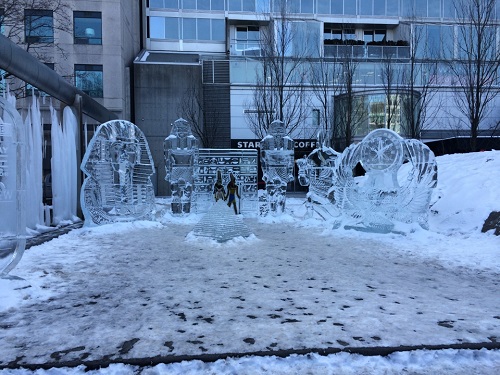Monuments to the Gods
In the fifth century BC, most Greeks lived in small city-states on islands in the Aegean Sea and in mountain valleys near its coast.. The Greeks built temples as homes for their gods so the gods would live among them and defend their cities. The first temples were built of timber and sud-dried brick and looked like the Greeks own huts. Later temples were built on top of a three-stepped plarform and surrounded by columns. When the wooden temples decayed they were replaced by stone temples, which looked exactly the same. The main goal of the Greeks was to make their temples look perfect. They built with the purest white marble and architects used geometry to design the temples so that all the proportions fit together in harmony.
Temple of Athena Nike
The design of this small temple, dedicated to the goddess Athena, is based on a typical Greek hut. It was built in the Ionic style.
Greek Orders
The Greeks built im three styles caled orders. You can recognize the different orders by the style of the wide section at the top of each column, which is called a capital.
- Doric order: This style has thick columns and plain capitals.
- Ionic order: The thinner columns of this style are topped by a capital with two white spirals called volutes.
- Corinthian order: This order is more elaborate and the capital is decorated with acanthus leaves.
Frieze
A narrow band of carving encircles the top of the temple wall and shows the procession on Athena's festival day.
 |
| Worshiping the Gods. Photo by Elena. |
The goddess Athena
The tall wooden statue of Athena had an ivory face, arms and feet. She wore clothing made of gold plates that weighed 2,500 lb.
The Parthenon
After defeating invaders, the people of Athens built this temple between 447 and 432 BC to honor the city's patron goddess Athena, Goddess of Wisdom. The ruined remains of the Parthenon still stand within the Acropolis, Athens's original fortress.
Carved in Stonemasons
The men and horses are part of a procession held every four years when Athens' leaders, warriors, athletes, musicians and poets climbed up to the Acropolis, on a bluff above the city, to present offerings before the Parthenon to Athena.
Illusions in Stonemasons
The ancient Greeks knew knew that our eyes see temples differently from the way they really are. They used many tricks, called optical illusions, to create a perfect temple. If steps are built perfectly flat or horizontal, they will appear to sag in the middle. Every horizontal line in a temple, therefore, curves slightly upwards. If columns are built straight up and down, the will appear to lean outwards. The ancient Greeks built vertical lines to lean towards the middle.
What has become of the plans drawn by the designers of ancient Greek buildings? A sharp observer recently found plans of the unfinished building carved on the inside of its foundation.
- Stories in stone: Painted sculptures portray dramatic events about the victories of Athena.
- Colonnade: Athena's marble temple is surrounded by 46 Doric columns,


















